Top 12 Yoga Poses & Asanas to Releive Constipation

Are you suffering from constipation and looking for the best ways to keep this at bay?
Yoga can be very helpful in treating constipation. Usually, people take medication to relieve constipation, but alternative therapies like yoga can prove to be an effective method to alleviate the issue. As per a 2015 study, yoga established itself as a cost-effective therapy for people with Irritable Bowel Syndrome and symptoms like constipation and diarrhoea.
Keep reading to know the best yoga poses to relieve constipation.

Table of Contents

How Effective is Yoga to Relieve Constipation?
Yoga can be an excellent alternative to medication and effectively treat constipation. The twisting poses, forward bends, and inversions help to massage digestive organs, improve blood flow and oxygen circulation, and stimulate stool to pass through the system. If individuals practise yoga regularly, they can assuredly experience healthy bowel movements.
In addition, yoga can help to handle stress, which is highly related to one’s digestive system. Individuals suffering from stress may tense their muscles, ultimately worsening constipation. Since the brain becomes highly alert during stress, it can upset the belly even more. Here, practising yoga can relieve stress and constipation.
What Are the Best Yoga Poses to Relieve Constipation?
This piece talks about the best yoga poses to relieve constipation. You can choose the suitable yoga asanas for your practice with the following list:
1. Mayurasana or Peacock Pose
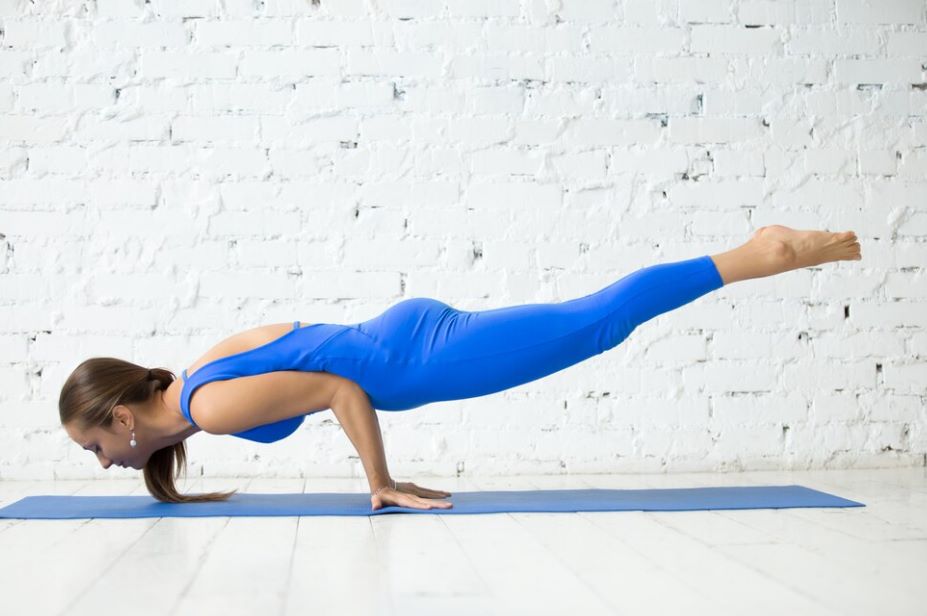
First on the list of yoga poses for relieving constipation comes Mayurasana. This peacock pose is a great way to resolve digestion issues, blockage and constipation. Mayurasana improves digestion, increases intra-abdominal pressure, decreases liver and spleen enlargements, and tears down the effects of unwholesome food.
Regarded as a higher level of asana, Mayurasana is best for trained practitioners, not first-time learners.
Steps to Do Mayurasana:
Step 1: To perform Mayurasana, start by kneeling on the floor and placing your hands shoulder-width apart with your fingers pointing towards your feet.
Step 2: Lean forward, bend your elbows, and rest your abdomen on your upper arms.
Step 3: Gradually stretch your legs back and lift them off the ground, aiming to balance your body parallel to the floor.
Step 4: Focus on maintaining your balance and breathing steadily, then gently lower your legs to release the pose.
2. Vajrasana or Adamant Pose
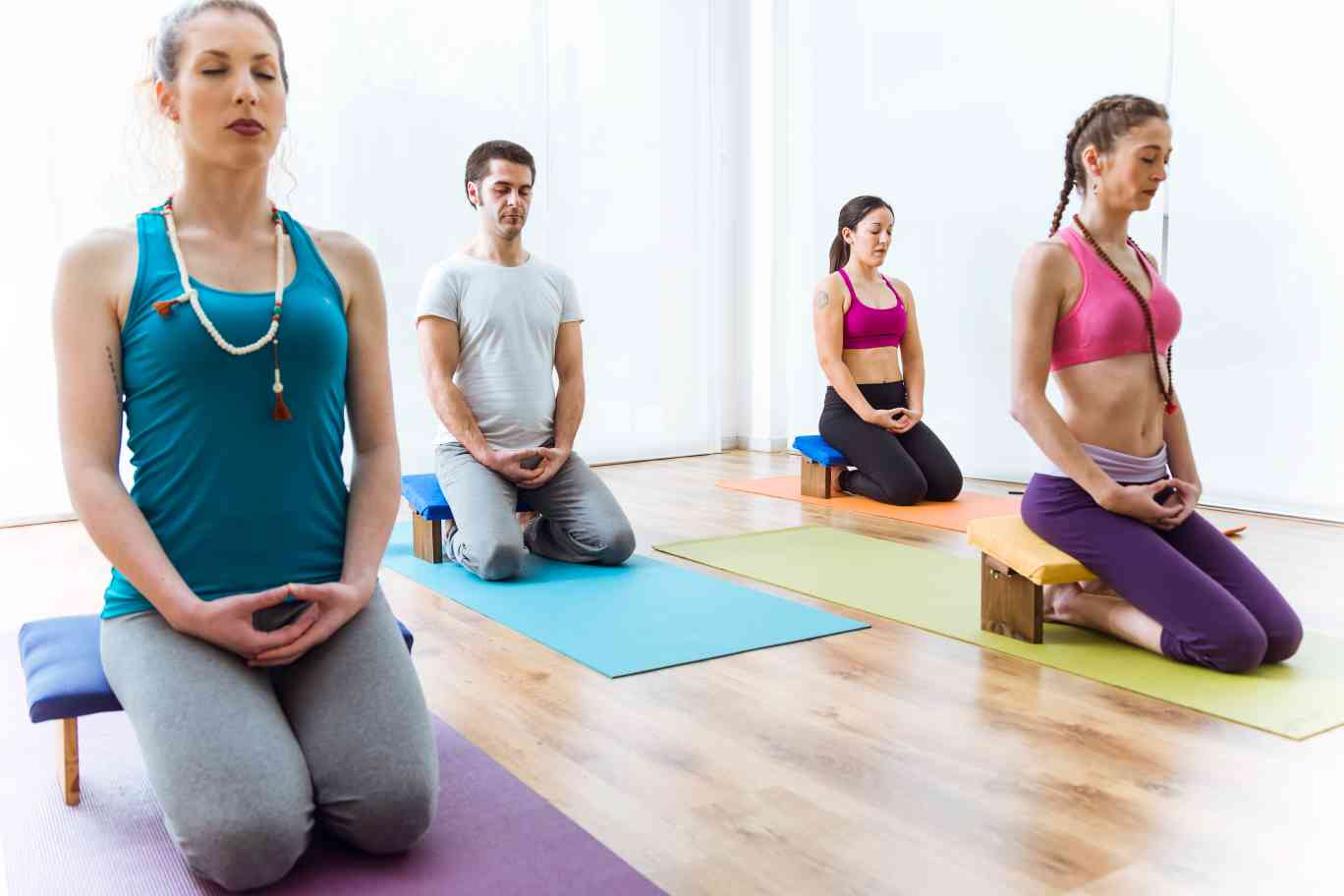
Vajrasana is one of the easiest yoga asanas for relieving constipation and curing indigestion. Vajrasana helps improve blood circulation in the abdominal area. Most importantly, this pose can treat various conditions like chronic constipation, digestive issues, and stomach disorders.
In addition, this asana can enhance flexibility in the lower limbs and strengthen digestive tracts and organs.
Steps to Do Vajrasana:
Step 1: To perform Vajrasana, start by kneeling on the floor with your knees together and your feet slightly apart, allowing your big toes to touch while your heels are separated.
Step 2: Sit back onto your heels, positioning your buttocks on your feet.
Step 3: Keep your back straight and place your hands on your thighs with your palms facing down.
Step 4: Hold the pose, maintain a steady and relaxed breath, and stay in this position for a few minutes to experience its benefits.
3. Halasana or Plough Pose
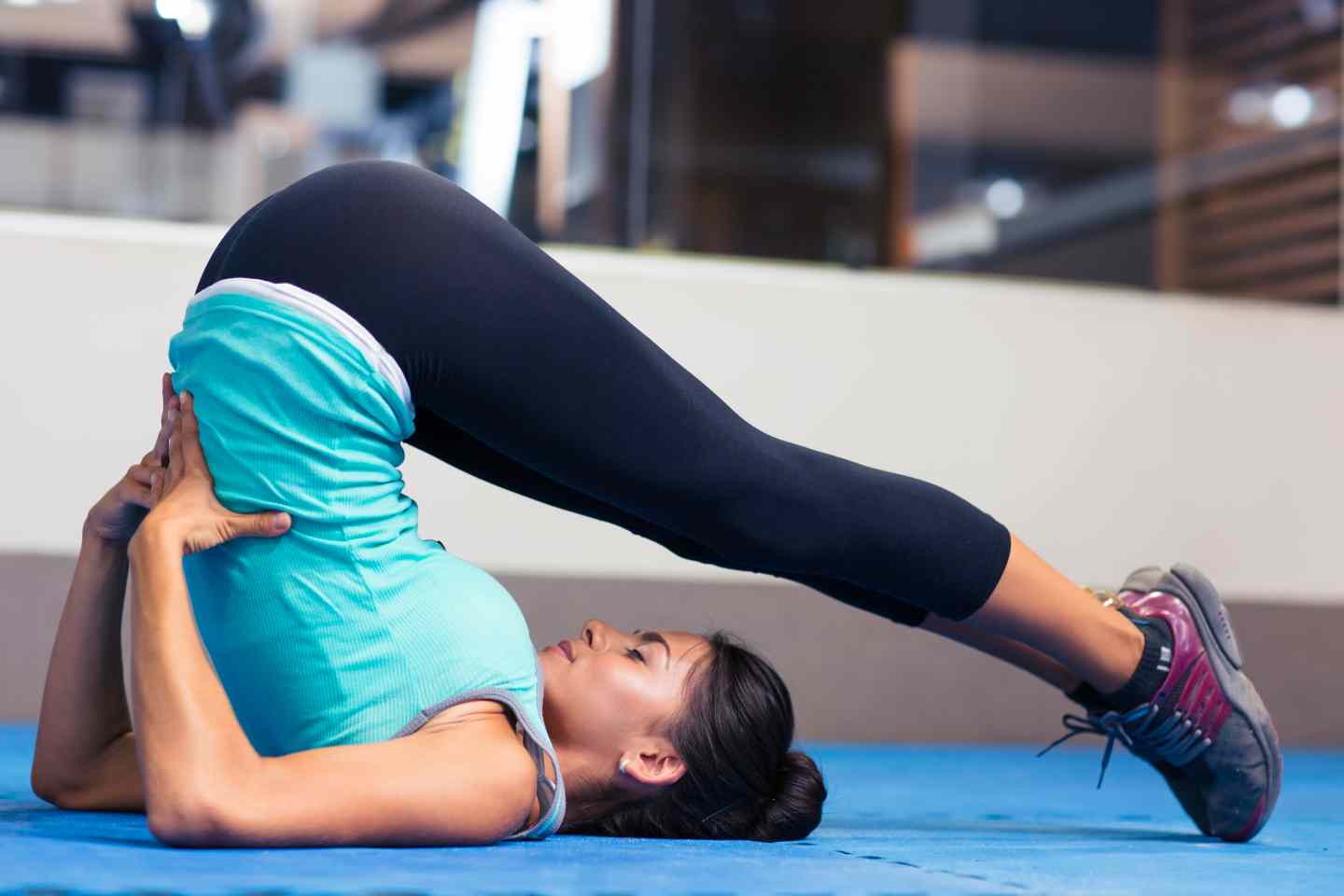
Halasana is one of the classic yoga exercises for curing constipation. It helps strengthen back muscles, stimulate abdominal viscera and organs, and improve digestion. Apart from stimulating digestion, Halasana helps prevent and alleviate tightness in the back, shoulder, and neck and increases flexibility and joint mobility.
Steps to Do Halasana:
Step 1: To perform Halasana, lie on your back with your arms resting by your sides, palms facing down.
Step 2: Slowly lift your legs off the floor, keeping them straight, and bring them over your head. Step 3: Lift your hips and lower your legs until your toes touch the floor behind your head.
Step 4: Keep your legs straight and keep your torso perpendicular to the floor.
Step 5: Hold the pose, focusing on your breath, then slowly roll your spine back down to release.
4. Pranayama IV
Pranayam IV is a breathing exercise involving abdominal muscles and belly movement and is known to improve the digestive system. Individuals suffering from constipation can practise this asana by lying on their back, bending their knees, keeping hips close to feet and putting one hand lightly on the naval.
Pranayam IV helps cure health issues like acidity, stomach disorders and shedding extra belly fat. Improve your bowel movement with Pranayam IV, the best yoga pose for relieving constipation.
Steps for Pranayama IV:
Step 1: Find a quiet place and sit comfortably with your spine straight.
Step 2: Close your eyes and take a few deep breaths to relax.
Step 3: Inhale deeply through your nose for a count of 4.
Step 4: Hold your breath for a count of 7.
Step 5: Exhale slowly through your mouth for a count of 8. Repeat this process 5-10 times.
5. Paschimottanasana or Forward Bending Pose
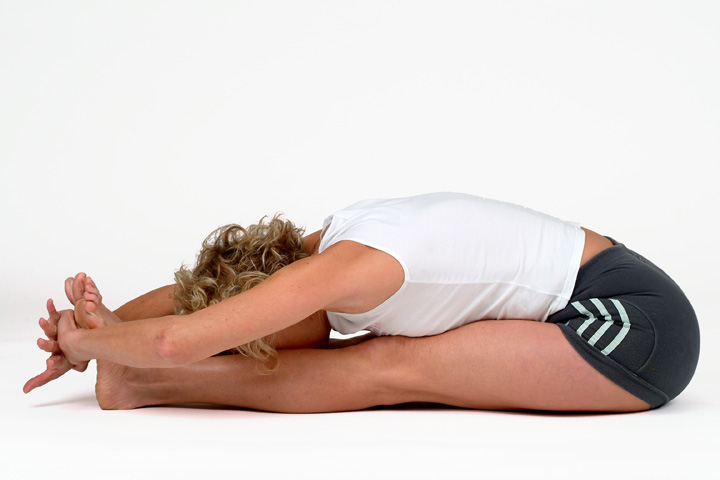
One of the basic yoga mudras for relieving constipation, Paschimottanasana, treats digestive disorders and constipation. When individuals practise this forward bending pose, the pressure within the abdominal cavity thoroughly rubs the abdominal viscera, which eases symptoms associated with weak digestion and constipation.
This pose is effective in strengthening back muscles abdominal regions and detoxification. To ensure smooth bowel movements, you can practise Paschimottanasana, one of the best yoga poses for relieving constipation.
Steps to Do Paschimottanasana:
Step 1: To perform Paschimottanasana, sit on the floor with your legs extended straight before you.
Step 2: Inhale deeply, lengthening your spine, and as you exhale, hinge at your hips to reach forward towards your feet.
Step 3: Try to grasp your feet or ankles with your hands, keeping your back straight.
Step 4: Hold the pose, breathing deeply and allowing your body to relax further with each exhale, then gently release and sit back up.
6. Pavanamuktasana or Wind-Relieving Pose
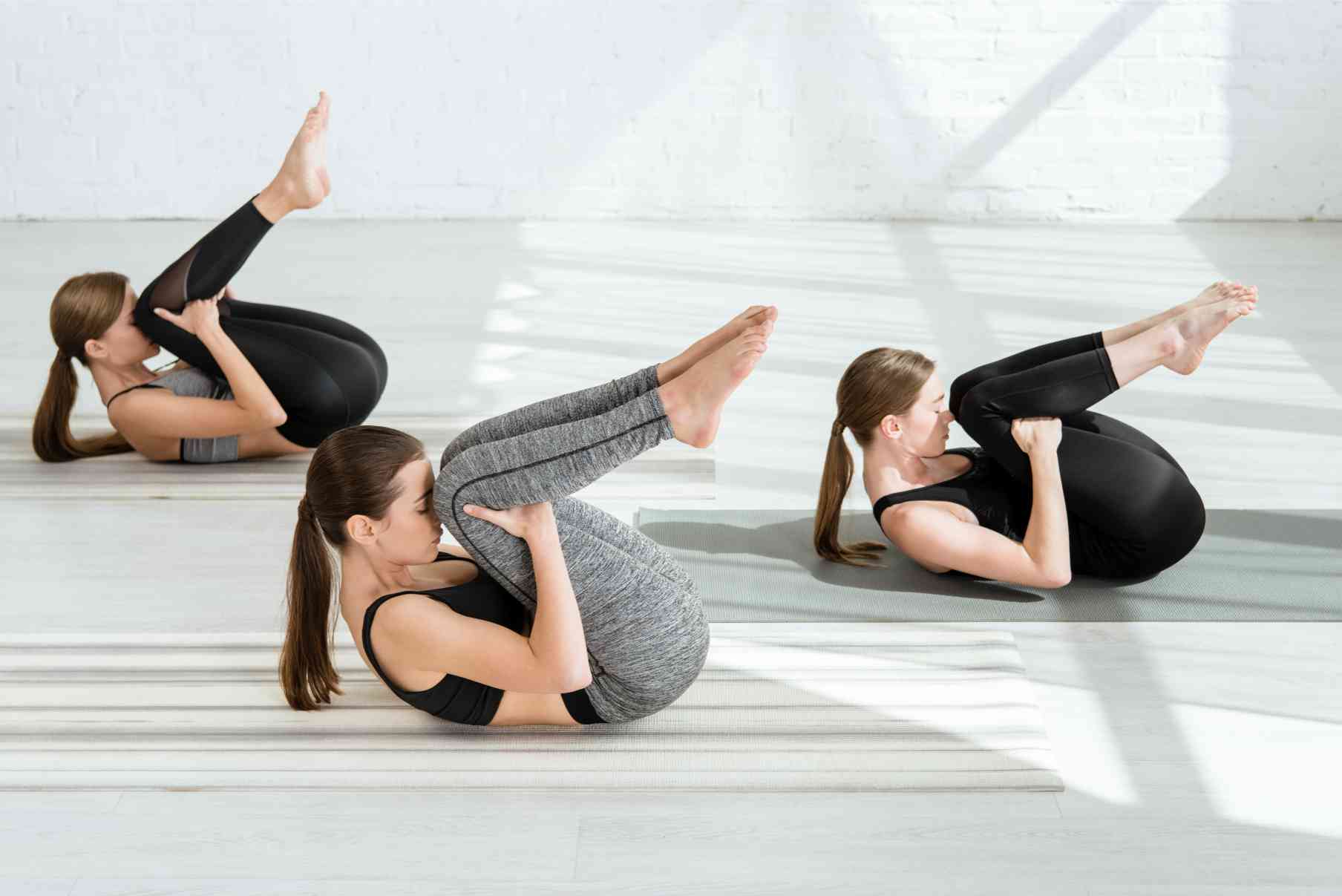
As the name suggests, Pavanamuktasana, or Wind-Relieving Pose, is one of the effective yogas for relieving constipation and easing gas discomfort. The posture helps pass gas from the digestive system and provides relief for those suffering from chronic constipation and poor liver health function.
Steps to Do Pavanamuktasana:
Step 1: To perform Pavanamuktasana, lie on your back with your legs extended and arms by your sides.
Step 2: Inhale deeply, and as you exhale, bring your right knee towards your chest, clasping your hands around your chin.
Step 3: Press your thigh into your abdomen while keeping your left leg straight and relaxed on the floor.
Step 4: Hold the pose, breathing deeply, then release and switch to the other leg, or bring both knees to your chest for a deeper stretch.
7. Bhujangasana or Cobra Pose

Bhujangasana is the seventh pose of Surya Namaskar (sun salutation), which demands practitioners to lie down on their stomachs. Bhujangasana or Cobra pose is one of the best yoga positions for relieving constipation and helps in treating digestive issues, strengthening abdominal muscles and clearing the digestive tract.
Steps to Do Bhujangasana:
Step 1: To perform Bhujangasana, lie on your stomach with your legs extended and the tops of your feet resting on the floor.
Step 2: Place your hands under your shoulders, keeping your elbows close to your body and inhale deeply
Step 3: Press into your hands to lift your chest off the ground, extending your spine while keeping your pelvis and legs grounded.
Step 4: Hold the pose, breathing deeply and looking slightly upward. Exhale as you lower your chest to the floor.
8. Ardha Matsyendra Asana or Half Fish/Twist Pose
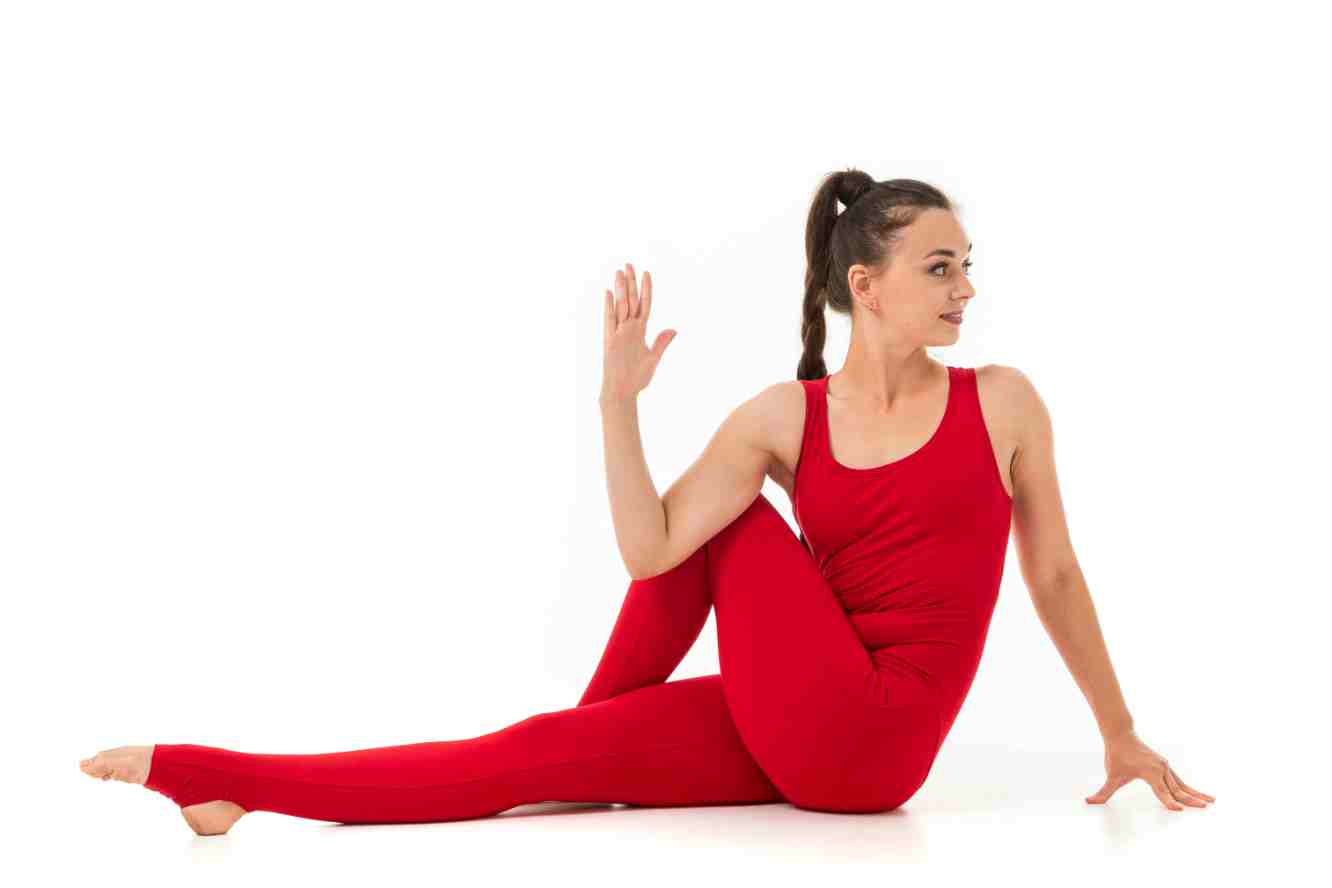
Regarded as one of the best yoga poses for curing constipation, Ardha Matsyendra Asana massages abdominal organs and regulates digestive juice secretion. Ardha Matsyendra Asana
improves bowel movement, and eases abdominal muscles, hence ensuring relief from constipation.
Steps to Do Ardha Matsyendra Asana :
Step 1: To practise Ardha Matsyendra Asana, sit on the floor with both legs extended straight.
Step 2: Bend your right knee and place your right foot outside your left thigh.
Step 3: Inhale deeply, twist your torso to the right, placing your left elbow on the outside of your right knee.
Step 4: Support your twist with your right hand behind you on the floor.
Step 5: Hold the pose, maintaining length in your spine and breathing deeply, then switch sides to repeat the twist on the opposite side.
9. Shalabhasana or Locust Pose
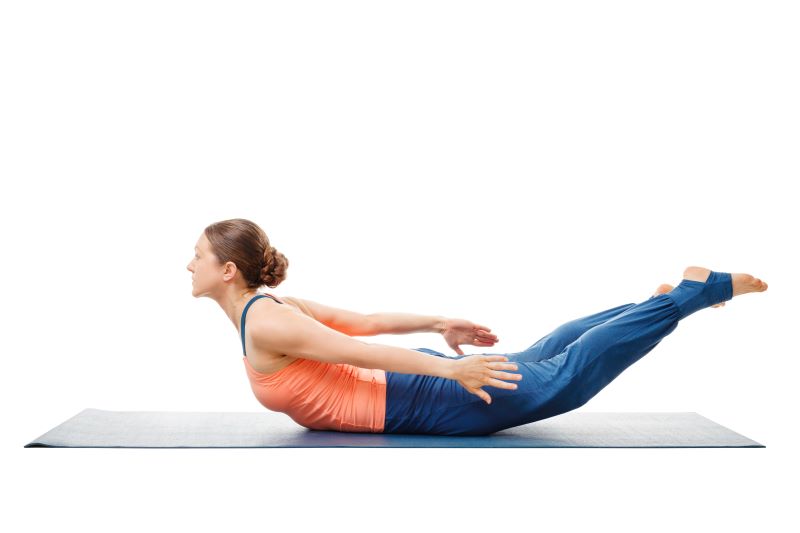
As the name suggests, the final position of Shalabhasana or Locust Pose assumes the posture of a locust or grasshopper. It intends to build a body with the robust movement quality of a locust. This asana can help to treat constipation. Locust posture massages abdominal organs and enhances the digestive system, thus treating constipation effectively.
Steps to Do Shalabhasana:
Step 1: Shalabhasana is performed by lying on your abdomen with your chin resting on the ground and your arms alongside your body, palms facing up.
Step 2: As you inhale deeply, lift your chest, arms, and legs off the floor simultaneously, using your back muscles.
Step 3: Keep your gaze forward and maintain the lift for a few breaths, then exhale as you slowly lower back down.
Step 4: When practised regularly, this pose strengthens the back muscles, improves posture, and stimulates abdominal organs.
10. Balasana or Child’s Pose
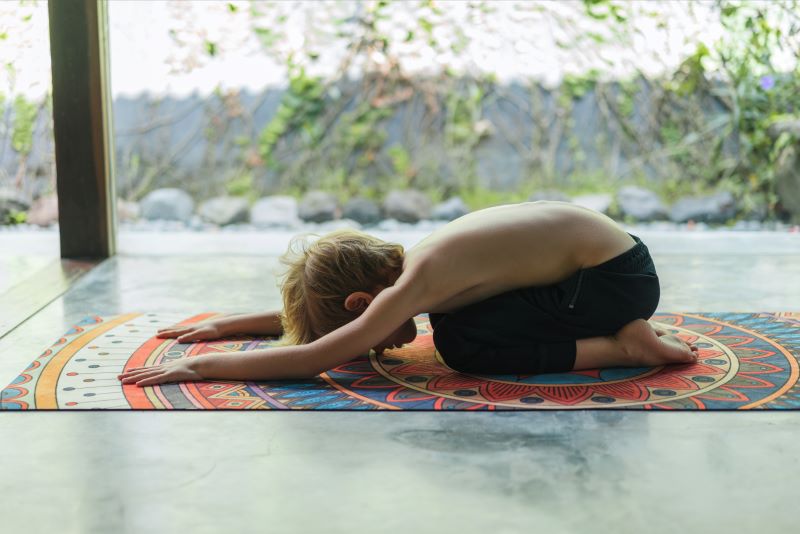
Balasana is undoubtedly one of the best yoga exercises for relieving constipation. Balasana contracts organs increases blood flow and helps with bowel movement. This pose is often used as a counterpose to more intense yoga postures, providing a moment of rest.
It suits practitioners of all levels and benefits those seeking a refreshing yoga experience.
Steps to Do Balasana:
Step 1: Kneel on the floor with your big toes touching and knees spread wide apart.
Step 2: Sit back on your heels and exhale as you fold, draping your torso over your thighs.
Step 3: Extend your arms forward or rest them alongside your body with palms facing up.
Step 4: Rest your forehead on the mat and relax your neck and shoulders.
Step 5: Breathe deeply into your back, holding the pose for several breaths to release tension and promote relaxation.
11. Dhanurasana or Bow Pose
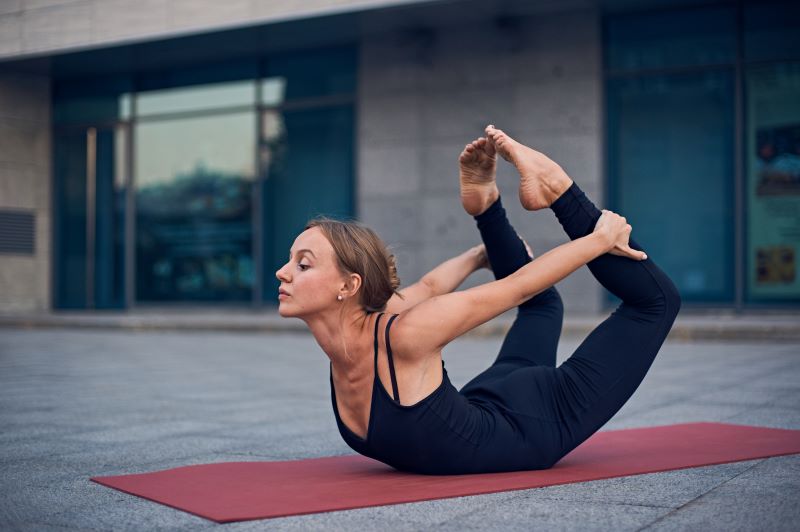
Dhanurasana, known as Bow Pose, helps relieve constipation by massaging the digestive organs and promoting bowel movement. By stretching the abdomen and stimulating circulation, it can alleviate discomfort and improve digestive function effectively.
Steps to Do Dhanurasana:
Step 1: To perform Dhanurasana, lie on your stomach with your arms by your side.
Step 2: Bend your knees, reach back, and grasp your ankles.
Step 3: Inhale intensely, lift your chest and thighs off the mat, balancing on your abdomen.
Step 4: Hold the pose, focusing on deep breaths, and gently release after several seconds.
12. Baddha Konasana or Butterfly Pose
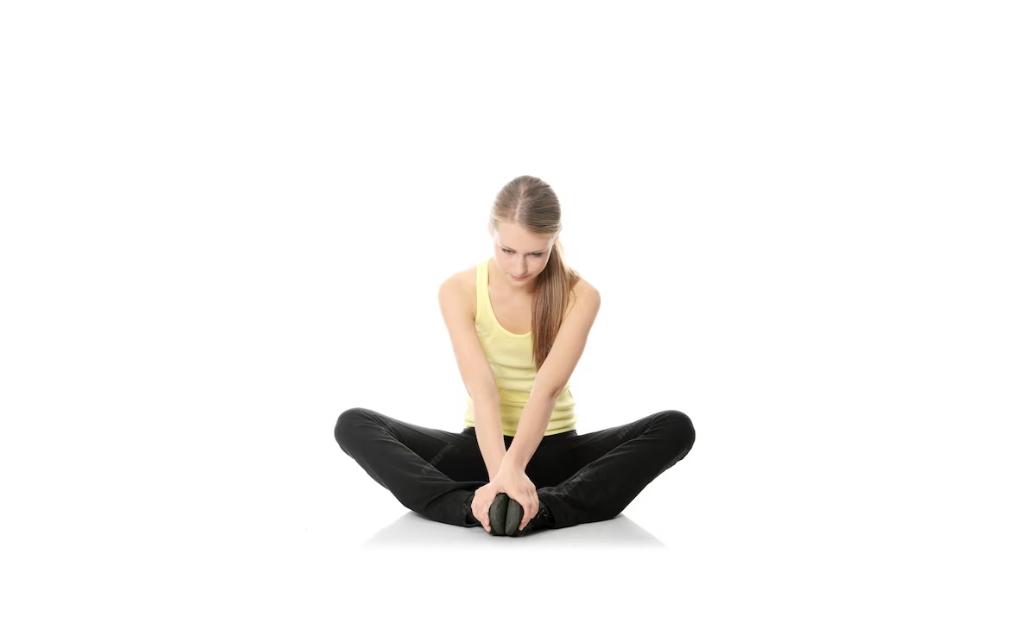
Baddha Konasana encourages relaxation and helps alleviate tension in the lower abdomen. This can ease bowel movements and promote digestive comfort. Regular practice of this pose also supports overall gut health by improving blood circulation to the abdominal area.
Steps to Do Baddha Konasana:
Step 1: Sit on the mat with a straight spine.
Step 2: Bring the soles of your feet together, letting your knees drop towards the sides.
Step 3: Hold your feet or ankles, lengthen your spine, and gently press your knees towards the floor.
Step 4: Breathe deeply and relax into the stretch, staying for several breaths and then releasing by extending your legs.
Effective Tips While Performing Yoga Asanas for Constipation
Yoga can effectively manage constipation by stimulating the digestive system and improving overall bowel function. Here are some tips to make your yoga practice more effective for relieving constipation:
- Focus on Gentle Movements: Engage in yoga sequences with gentle movements and stretches, particularly those that enhance relaxation and circulation in the abdominal area. These can help stimulate digestion and ease constipation.
- Prioritise Twisting Motions: Include gentle twisting motions in your routine. Twists can massage the abdominal organs, promoting improved digestion and bowel function, essential for relieving constipation.
- Practise Breathing Exercises: Perform deep breathing exercises to stimulate the parasympathetic nervous system. This aids digestion and relaxation, which can help alleviate constipation by promoting bowel movements.
- Promote Relaxation: Stress can contribute to constipation. Integrate relaxation techniques like meditation or progressive muscle relaxation into your yoga practice to reduce stress levels and aid digestion.
- Hydrate Adequately: Drink plenty of water throughout the day, including before and after your yoga practice. Proper hydration supports healthy digestion and regular bowel movements, helping to alleviate constipation.
- Maintain Consistency: Establish a regular yoga practice routine. Over time, consistency can help regulate your body's natural processes, including digestion, making it easier to manage constipation.
- Eat a Balanced Diet: Consume a diet rich in fibre from fruits, vegetables, and whole grains. Fibre helps bulk up stools and facilitates easier passage through the digestive tract, aiding in the relief of constipation.
Diet Tips to Combine with Yoga for Constipation
Combining a balanced diet with yoga can significantly help in managing constipation. Here are some diet tips to complement your yoga practice:
- Increase Fibre Intake: Fibre adds bulk to stools and helps regulate bowel movements. Include fibre-rich foods, such as fruits (apples, pears, berries), vegetables (leafy greens, broccoli, carrots), whole grains (oats, brown rice), and legumes (beans, lentils).
- Stay Hydrated: Drink an adequate amount of water throughout the day. Water helps soften stools, making them easier to pass. Aim for at least eight glasses (64 ounces) of water daily or more if you are physically active or in a hot climate.
- Include Prunes and Prune Juice: Prunes are natural laxatives due to their high fibre and sorbitol content. Eating a few prunes or drinking prune juice can help relieve constipation. Start with a small amount to see how your body reacts.
- Probiotic Foods: Probiotics promote healthy gut flora and can aid digestion. Include probiotic-rich foods, such as yoghurt (with live cultures), kefir, sauerkraut, kimchi, and kombucha in your diet.
- Healthy Fats: Include moderate amounts of healthy fats, such as avocados, nuts, seeds, and olive oil. These fats can help lubricate the intestines and promote smoother bowel movements.
- Limit Refined Foods and Sugars: Reduce your intake of processed foods, refined sugars, and sugary drinks. These can contribute to constipation by slowing down digestion and reducing stool bulk.
- Regular Meals: Eat meals daily to establish a routine for your digestive system. Skipping meals or having an irregular eating pattern can disrupt digestion and bowel movements.
- Herbal Teas: Certain types of herbal teas, such as peppermint tea, ginger tea, or chamomile tea, have digestive benefits that can also help you alleviate constipation. Drink them warm for better digestion.
Who Should Do Yoga for Constipation?
Yoga for constipation is beneficial for a variety of individuals, including those with sedentary lifestyles needing digestive stimulation and people experiencing stress or anxiety that impacts digestion.
Yoga's gentle movements can help elderly individuals maintain flexibility and improve circulation, aiding digestion. Modified yoga practices can also relieve constipation and promote relaxation for pregnant women. For those with digestive disorders like IBS, yoga's gentle poses and relaxation techniques can alleviate symptoms.
It is also beneficial for post-surgery recovery, especially abdominal procedures, to restore bowel function. Ultimately, yoga provides a natural, gentle approach to managing constipation for anyone seeking alternative relief methods.
Who Should Avoid Yoga for Constipation?
Yoga is beneficial for almost all kinds of health issues and for everyone. However, certain individuals must not practice yoga poses to relieve constipation.
For instance, pregnant women and individuals suffering from ulcers, heart issues or abdominal injuries must not practice Bhujangasana. On the other hand, Ardha Matsyendra Asana must not be practised during menstruation, pregnancy or while having heart and spinal diseases.
Further, individuals must not practice yogas like Paschimottanasana during pregnancy or while having a slipped disc or asthma.
Disclaimer: Practice the yogas mentioned above with the help of a trained practitioner, and most importantly, consult doctors to ensure your body is fit to do these yogas.
With such a detailed discussion, we have reached the end of this piece on the best yoga postures for constipation. Individuals can pick any yoga pose to relieve constipation or combinations of it and practice it to ensure regular bowel movements and treat other stomach disorders.













